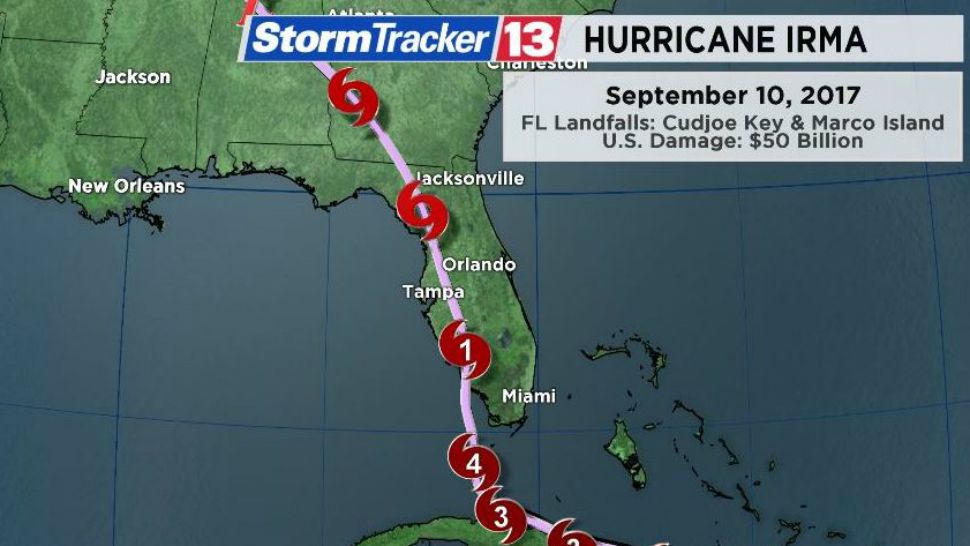ORLANDO, Fla. — It has been one year since Hurricane Irma made landfall in Florida as a major hurricane.
- Irma made landfall in Florida as Category 4 storm
- Irma damage cost $50 billion dollars
- TRACKING THE TROPICS: Watches, warnings, forecasts, spaghetti models
- STORM SEASON 2018: Interactive Storm Tracker, Storm Supply checklist, FAQs
Irma made seven landfalls, and two of those were in Florida.
Irma made its first landfall in the Florida Keys as category 4 hurricane with winds of nearly 132 mph. When it made its second landfall, it was a category 3 hurricane with winds around 112 mph on Marco Island on Sept. 10.
The hurricane continued to move through Central Florida producing heavy rain, which led to flooding, tornadoes and damaging wind.
Irma produced 21 confirmed tornadoes in Florida, with more than 50 tornado warnings being issued across portions of Central Florida.
The one day rainfall totals were impressive: Melbourne picked up more than 10 inches of rain on Sept. 10. Orlando received nearly 7 inches of rain, while Daytona Beach officially picked up more than 4 inches.
Record flooding occurred along the St. Johns River, thanks to the storm surge and heavy rains. The St. John’s River set a record flood stage near Jacksonville.
Irma was responsible for 47 direct deaths across the Caribbean Islands and the southeastern U.S. The majority of the deaths were in the Caribbean Islands due to Irma’s stronger winds when it passed over the islands.
There were 10 deaths in the U.S. and 82 indirect deaths. Seventy-seven of those deaths were in Florida.
Irma caused damage to more than 7,000 homes in Brevard County and nearly 4,000 structures in Osceola County. In the end, there was $50 billion dollars’ worth of damage caused by Irma.
It is important to remember that we are at the peak of hurricane season. It is always important to have a plan, be prepared and to stay up-to-date with the latest developments in the tropics.
Hurricane season runs through November 30th.
You can always get the latest on the tropics through the entire season at :51 past the hour in your Weather on the One’s on Spectrum News 13.



